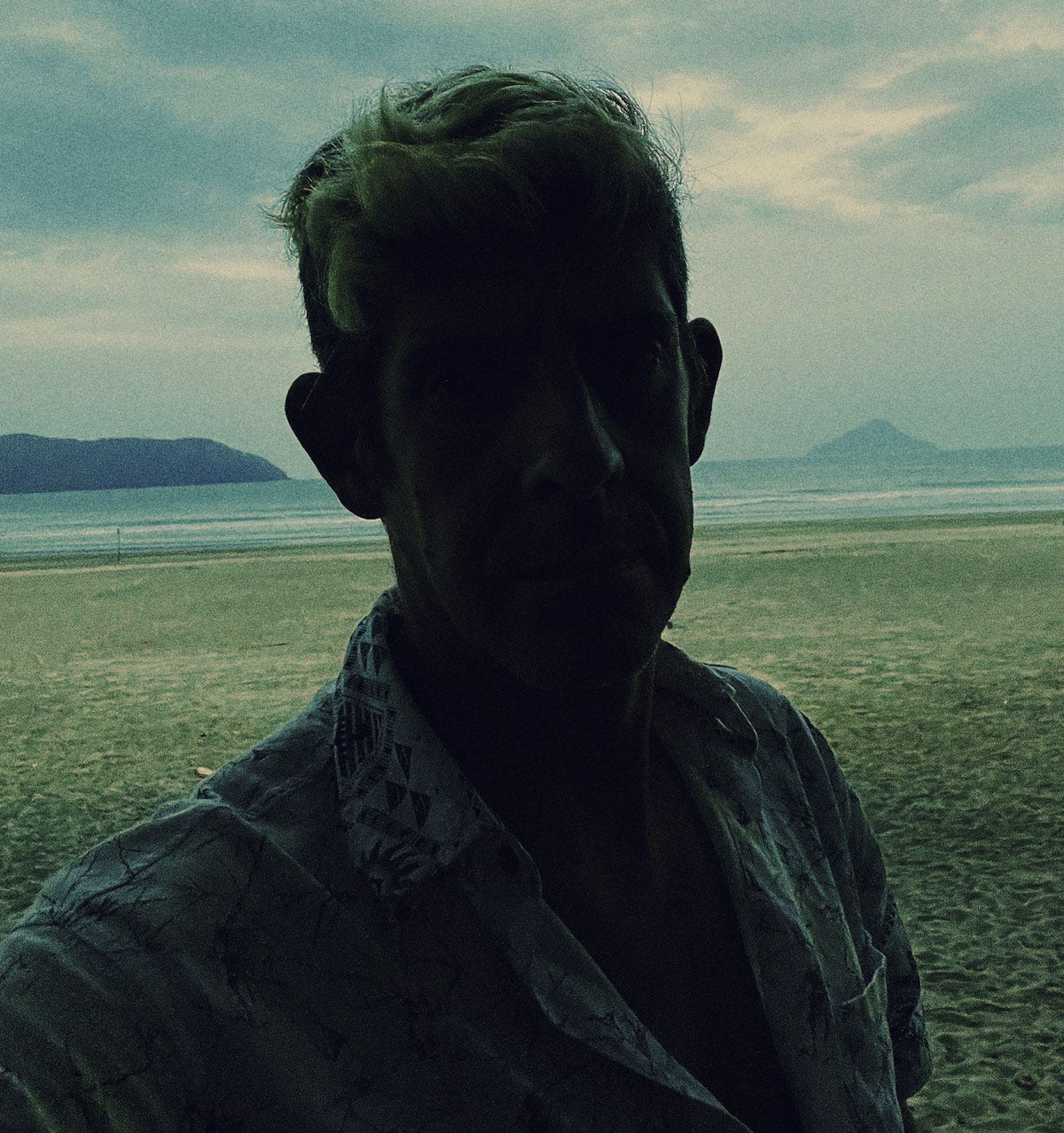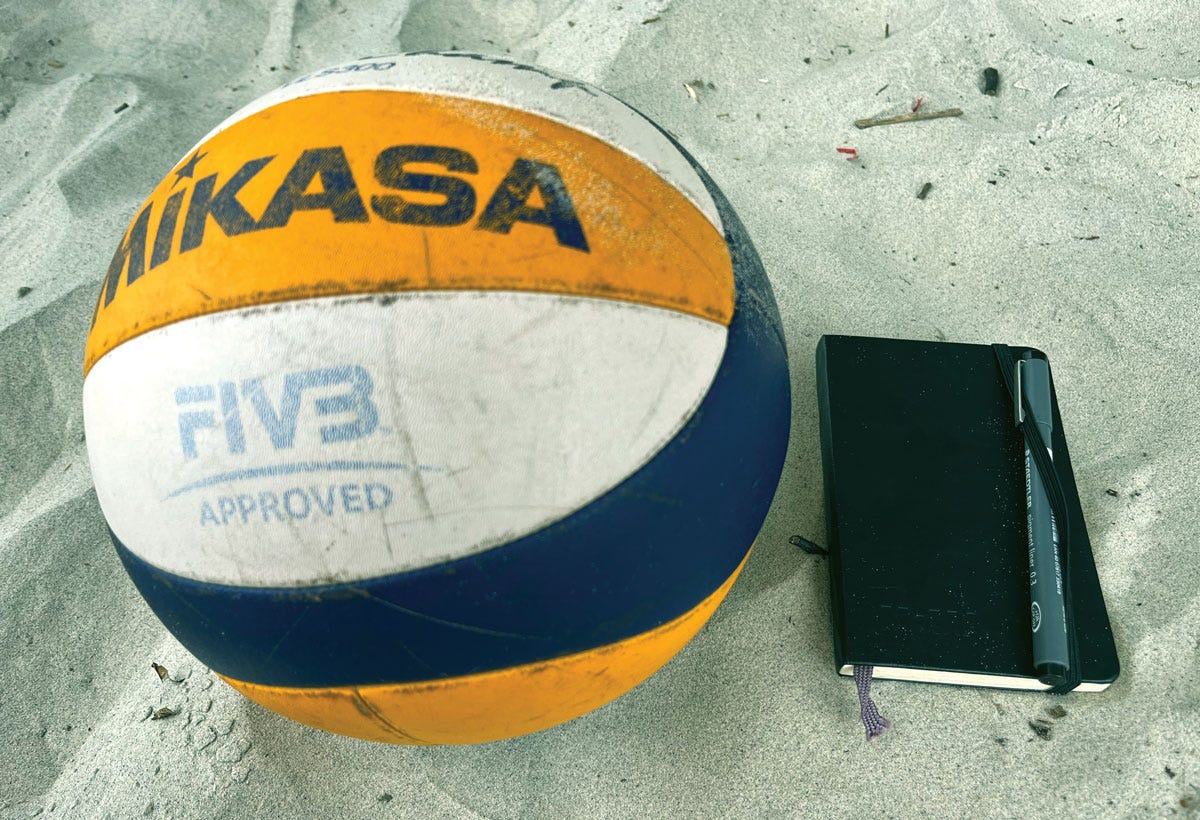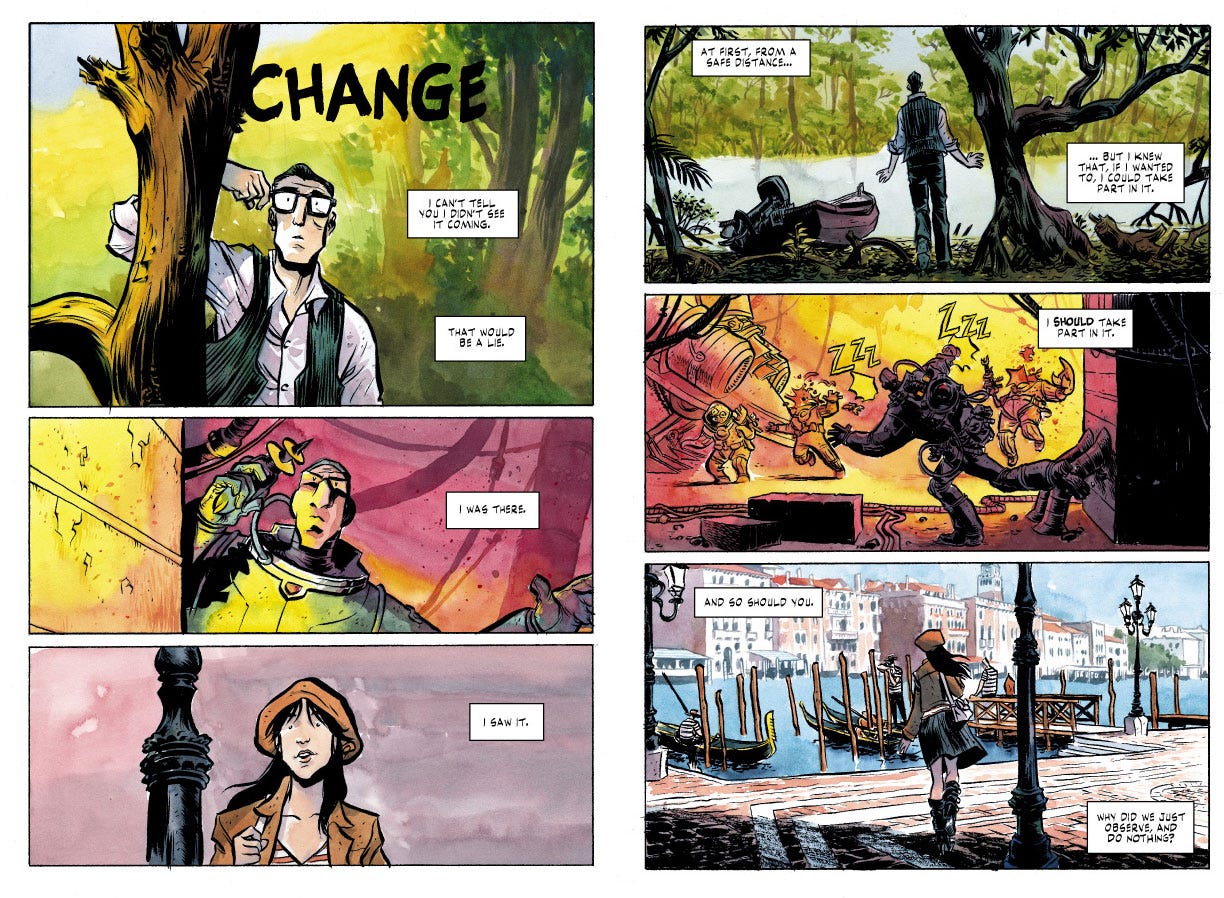Musical ensemble
understanding the different pieces of the orchestra to compose the opera
I haven’t been back to the beach since the first week of January, and I really needed it. There are so many different distractions at the beach that, instead of spreading me thin like the daily distraction in São Paulo, help me connect to the inner voices in my mind that I need to listen and filter into the World through my art.
I consciously didn’t bring any books to read, even if reading with my feet on the sand while listening to the gentle sound of the waves is one of my favorite things. I didn’t want to dive into other stories this weekend. I went into the ocean and I dove into my own thoughts, convoluted and confused as they might have been, and let them float with me in the sea as the waves came and went.
I played a lot of volleyball with my niece. I kept my notebook close, in case an idea appeared, but I' ended up too busy practicing setting, passing, serving and spiking.
(An idea finally came on Sunday night, while I was driving back home, between tunnels of the road that goes up the mountain)
Stories with beats
The continuing search for short stories to write and draw, I have been looking back at old stories I did, trying to understand what inspired them, why I did them that way, and what I was trying to accomplish. One thing that was always a nice characteristic of a short story was the chance to do everything: write, draw, color and letter. The scheduling demands of a big graphic novel or a monthly mini series always made it impossible for my brother and I to do everything in a story, and we always gave up something. Aside from Daytripper, most series we drew, we didn’t write. As we’re being reminded these days in our new big story, writing and drawing takes too much time (for us, at least) and, much like on Daytripper’s case, now we’re only able to write and draw the story because we don’t have any monthly deadline to pressure the production.
On most stories that we made primarily for the American market, we also gave up coloring and lettering. We have been lucky with our collaborators, though, and have worked with very talented people who helped us tell our stories.
But making comics is about combining a lot of elements together on the page, and the more control and knowledge you have of these elements, more you can push the language of comics towards something special.
I made a short story called CHANGE for the Dark Horse Presents anthology. I’ll always have a soft spot for DHP, as it was the anthology where Frank Miller’s Sin City first came out, where Mike Mignola published Hellboy fighting werewolves (the second Hellboy story), so every time one of our editors asked if we wanted to make a story for it, we said yes. This particular story I made started because I was asked to make a cover for the anthology, and I played with the idea of how comics tell stories in a lot of exciting genres. I drew an astronaut coming out of his crash-landed spaceship in the middle of a forest, facing a strange group of people wearing masks and holding knifes and spears. Both the editor and I liked the cover so much that she asked me if I wanted to expand on that image and create a story.
In the story, I wanted to keep the multiple genres theme of the cover (even if the story came out in another issue of anthology, and I did another cover for that issue, also shown above), so I thought of a narrative structure of four stories being told at the same time: One with a explorer in the middle of the jungle, one with an astronaut in space, one with a girl in a foreign city (Venezia) and the narrator being the forth character, talking about his/her personal journey, and the words would connect the three visual narratives, creating yet another layer for the story that happens inside the head of the reader. You can see in the script and thumbnail of the first two pages that I was playing with beats, starting all stories the same way. The first page has three panels, one for each character of each story, and they’re all looking ahead to something off-panel (and, at the same time, to the reader, inviting – or daring – the reader to participate). The second page also has three panels with the reverse shot, showing us the Worlds the characters are facing while putting us on their shoes.
“I should take part in it”, says the narration.
“And so should you”.
As the story continued, I played with different beats. Even in an eight page story, I didn’t want to make all the pages with the same grid. A story about the many possibilities of life had to explore the many narrative possibilites of the form.
Be safe. Be kind. Be cur…
Wait!
…
What about the band?
Continue a leitura com um teste grátis de 7 dias
Assine Fábio’s Moon Base para continuar lendo esta publicação e obtenha 7 dias de acesso gratuito aos arquivos completos de publicações.








